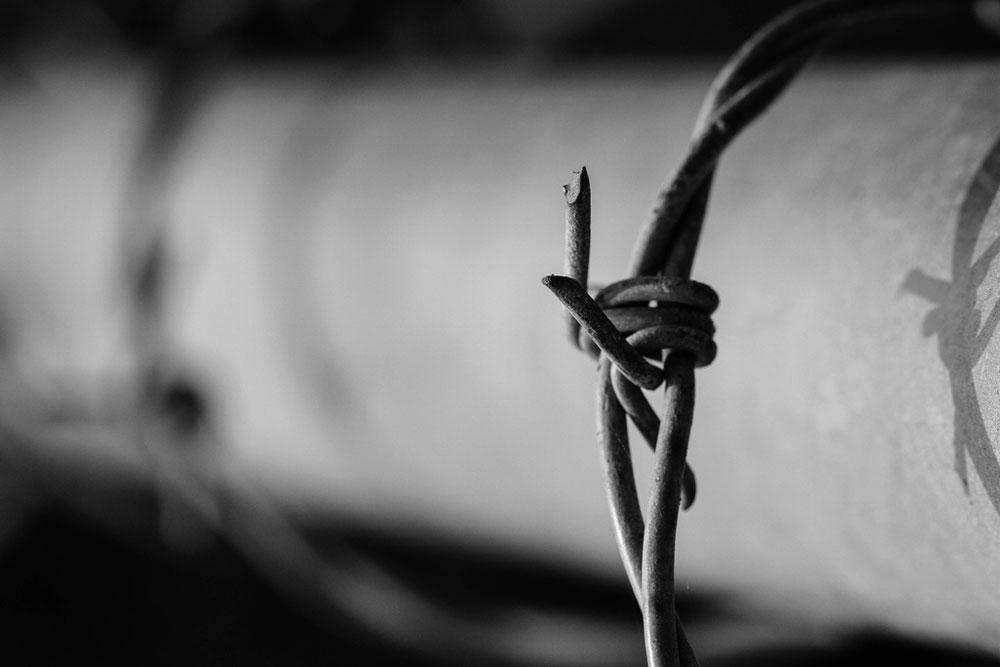
March 11, 2020; The Appeal
By now we should all know who is most vulnerable to COVID-19: the elderly, people with compromised immune systems, and people with respiratory conditions. But there’s another set of factors that make people more vulnerable, including the inability to self-isolate or lack of access to sanitary facilities. One of the populations most subject to these vulnerability factors is people in prisons.
There are currently about 2.3 million people in prison or jail in the US right now, and several factors contribute to their risk of contracting coronavirus. One is just the general unsanitary condition of facilities. Homer Venters, the former chief medical officer of the New York City jail system, described jails and prisons as “already filthy, and have, generally speaking, a low standard of clinical care.”
It’s also very difficult to isolate infected or exposed persons because facilities are often overcrowded or just not built for that. A source at a Florida facility told ABC news that facilities can’t get bigger orders of cleaning supplies and wipes, and hand sanitizer is banned in most prisons because of its alcohol content.
Sgt. Ray Kelly of the Alameda County Sheriff’s Office said, “We’re dealing with a very at-risk population with a lot of underlying health problems. Some have compromised immune systems, HIV, cancer, and hepatitis. This is like the most at-risk group in society who ends up in jail.” (This is something we may want to reflect upon, as a society, when things calm down.)
Some public officials recognize the increased risk faced by incarcerated people and are taking the most logical step available: letting them out. In San Francisco, the opposing sides of the criminal legal system teamed up when Public Defender Manohar Raju and District Attorney Chesa Boudin directed their respective agencies to do what they could to reduce prison populations.
Boudin ordered his staff not to oppose motions for pre-trial release and to consider “time served” in plea deals to maximize the number of people who could be released. Raju’s office released a statement asking the Sheriff’s office “to assess all sentenced persons in jail to see who is eligible for immediate release on electronic monitoring or work release programs, and to then begin processing their release.” Both offices are prioritizing the release of people over 60 or those with other health conditions, those with drug or other nonviolent offenses, and those who already have a scheduled release date.
Sign up for our free newsletters
Subscribe to NPQ's newsletters to have our top stories delivered directly to your inbox.
By signing up, you agree to our privacy policy and terms of use, and to receive messages from NPQ and our partners.
Advocates in Indiana sent an open letter demanding similar action from Governor Eric Holcomb. Two nonprofit leaders argued, “Once a virus like the one causing COVID-19 enters a prison, it is almost certain to infect the entire prison population and employees despite best efforts to contain it,” in part because “prisoners as a group are likely to be given lower priority when medical services become scarce in the broader community.” They asked Holcomb to consider “immediately ordering a one-time review of all people in Indiana prisons who are elderly and/or infirm with an eye toward providing medical furloughs or compassionate release to as many of them as possible.”
On the national level, Massachusetts senator and recent presidential candidate Elizabeth Warren took the lead to demand care for those incarcerated. She sent letters to Director Michael Carvajal of the Federal Bureau of Prisons and President and CEO Damon T. Hininger of CoreCivic, asking how they would prevent the spread of coronavirus in their facilities. The letters were co-signed by 14 other senators, including current and former presidential candidates Kamala Harris, Amy Klobuchar, Cory Booker, and Bernie Sanders. Naturally, Warren had 17 detailed questions about the facilities’ safety plans, including how cafeterias would distribute food if workers called in sick and how BOP would communicate with people’s families.
Other jurisdictions are also considering release measures; Santa Clara, California’s sheriff Laurie Smith is considering paroling inmates, “releasing them with ankle monitors, or placing them in alternative custody arrangements such as private residences or residential drug-treatment programs.” The DA in Brooklyn, NY called on Governor Andrew Cuomo to grant emergency clemency to vulnerable people.
Across the river in Manhattan, though, things are not looking so good. Cuomo faces widespread condemnation over reports that the state will use prison labor to produce face masks and 100,000 gallons of hand sanitizer for public facilities—and, once again, hand sanitizer is usually contraband in prisons. Even worse, the Daily Beast reported that the worst-case-scenario contingency plan is to have Rikers Island inmates dig the mass graves and bury the dead on nearby Hart Island. Massachusetts representative Ayanna Pressley called the plan to have prisoners manufacture sanitizer “especially demeaning, ironic & exploitive.”
The Legal Aid Society, The Bronx Defenders, and others collaborated on a statement demanding that instead, New York release vulnerable people from its facilities because “officials cannot guarantee the safety and health of people we represent.”
Kenosha, Wisconsin’s police department took a morbid humor approach, declaring crime in the area canceled during the pandemic. “We ask anyone who was planning to commit any crimes to please stay home for their safety,” they wrote.
It’s meant to be funny, but as long as conditions in the nation’s jails and prisons remain as they are, it’s also true: being arrested could immediately endanger someone’s health. And if it’s that easy to quickly demand someone’s release, perhaps they oughtn’t to have been there in the first place.—Erin Rubin













